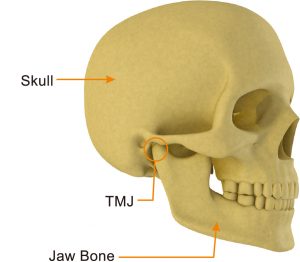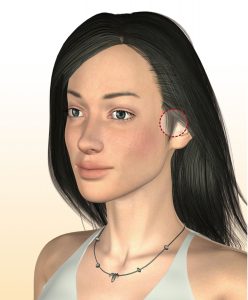Oral & Maxillofacial Surgery
Oral and maxillofacial surgery is defined as the specialty of dentistry that includes the diagnosis, surgical, and adjunctive treatment of diseases, injuries, and defects involving the functional and esthetic aspects of the bone and soft tissues of the oral and maxillofacial region. These include complex tooth removal, surgical removal of wisdom teeth and impacted teeth, dental implants and related bone grafts, sinus lift surgery, temporo-mandibular joint (TMJ) treatment, cleft lip palate, facial trauma or fracture, and orthopedic surgery of the jaw bone. In addition, they will also do biopsy and removal for jaw bone cysts, oral tumors, and tissue hyperplasia.
Temporomandibular Joint Disorder (TMD)
 Do you have frequent headaches, earaches, stiff jaw muscles or dull aching facial pain? Does your jaw lock or stray to one side when you open your mouth? These pains and discomfort may be related to the jaw point, called temporomandibular joint or “TMJ”, and the associated muscles that work to move the joint. When the source of these problems is due to TMJ or its muscles, they are often referred to as “TMD” for temporomandibular joint disorders.
Do you have frequent headaches, earaches, stiff jaw muscles or dull aching facial pain? Does your jaw lock or stray to one side when you open your mouth? These pains and discomfort may be related to the jaw point, called temporomandibular joint or “TMJ”, and the associated muscles that work to move the joint. When the source of these problems is due to TMJ or its muscles, they are often referred to as “TMD” for temporomandibular joint disorders.
How jaw joints and muscles work
The joints and muscles on each side of your jaw work together to open and close the mouth. These joints move in different directions to give you a range of motion needed to chew, talk and swallow.
Temporomandibular joints are among the most complex joints in the body. They work together in a delicate balance with muscles, ligaments, cartilage and jaw bones. Pain can result when these parts don’t work together properly.

What causes TMD?
Several conditions may be linked to TMD. This often makes it difficult to locate the cause of in TMD. These conditions include:
- Jaw or head injuries
- Diseases that affect muscles or joints, such as arthritis
- Teeth grinding
- Anxiety and/or stress
Signs and symptoms of TMD
Temporomandibular disorder is a condition, not a specific disease. TMD consists of many different signs and symptoms ranging from mild to severe. Some patients may have symptoms but are still able to fully function in their everyday lives. TMD appears to be more common in women. Specific signs and symptoms include:
- Pain in or around the ear
- Tender jaw muscles
- Clicking or popping noises in the jaw
- Difficulty in opening or closing the mouth
- Pain when yawning or chewing
- Jaw joints that feel as if they are “locked”, “dislocate”
- Headaches
Treatment Options
For some patients, the disorders may disappear by themselves; others, they may come and go, or may worsen over time. TMD are often managed, rather than cured.
To determine what is the best way to treat your TMD, a complete evaluation is recommended. Your dentist may check the joints and muscles for any tenderness, clicking, popping or difficulty in moving. Your medical history maybe reviewed, so it is important to update your dentist about your health even though you may not think it has anything to do with your teeth. Your dentist may take x-rays of your teeth, jaw or TMJ, and may make a model of your teeth to see how your bite fits together. Your general dentist may recommend treatments, or refer you to a physician or dental specialist.
There are a number of ways in which TMD may be managed. Success of treatment will require you and your dentist working together to find the best approach that relieves your symptoms.
Treatment may involve a series of steps. The step-by-step plan will allow you to try simple treatment before moving on to something that is more involved. Experts generally recommend a conservative approach to treating TMJ disorders. This means that the simplest treatment that provides you with pain relief may be the best for you.
The following self-care practices may be recommended:
- Eat softer foods or avoid foods that cause symptoms
- Minimize extreme jaw movements, such as yawning, yelling or singing
- Avoid chewing gum
- Use heat or ice packs to relieve the pain
- Practise relaxation techniques to control jaw tenderness, such as meditation
If necessary, your dentist may recommend the following to relieve your symptoms:
- Exercises to strengthen jaw muscles
- Medicines to reduce pain or inflammation, or to help you relax
- A night guard or bite plate to decrease clenching or grinding of teeth
In some cases, your dentist may recommend fixing an uneven bite by adjusting or reshaping some teeth. Orthodontic treatment may also be recommended.
Surgical Treatment Options
For patients who do not respond well to conservative management, there are treatment options for minimal-invasive procedures and surgical procedures.
- Arthroscopic Manipulation and Arthrocentesis with Injection of Medications
- Open Joint Surgery


